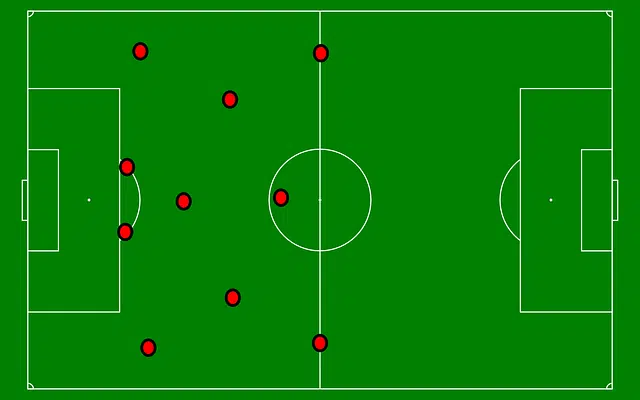
In football, the arrangement of the players on the playing field is called an alignment.
The act and result of aligning (placing elements in a straight line; adhering to a tendency or doctrine; making an athlete form part of the lines of his team in a certain match) is known as alignment .
Alignment, therefore, can refer to a certain order or organization of objects or people. For example: "Look at the line-up of tin soldiers that Manuel made" , "Please take care of the line-up of the children so we can perform the ceremony" , "When entering the town on the main street, I was surprised by the line-up of the trees on the sides of the road .
When an individual respects or complies with the precepts of a system , a method or an ideology , he is said to be aligned: "Our political party managed to grow a lot thanks to the alignment of young people," "The governor asked the mayors to work to achieve the alignment of the independent councilors" , "I do not want a forced alignment, I prefer there to be dissent and debate" .
Alignment in sports
In the field of sports , the initial arrangement of a team's players for a match is called a lineup.
Those who make up the lineup are the starters: "The Spanish coach surprised by leaving the Belgian defender out of the lineup for the match against the last champion," "Since Gómez entered the starting lineup, he never came out again," "The technical director has not yet confirmed the lineup for tonight's match .

The alignment of text is one of the attributes that determine the format of paragraphs.
The format of a text
Text alignment , on the other hand, is one of the formatting attributes of a paragraph, which serves to determine the appearance of the content. The most common is left alignment, thanks to which there are no spaces between the first character of each line of a paragraph and the left margin, so that irregularities occur at the right end.
Other possibilities are right alignment, which gives us the opposite result to the previous one, and justified alignment, which prevents the appearance of spaces on both the right and the left. Justifying a text is not always the best or the most aesthetic option, since to achieve the supposed uniformity of the dimensions of a paragraph, the word processor must add as many spaces between the words of each line as necessary, and this causes certain parts of the content look "stretched", especially those that contain very long words.
On the other hand, there is the centered alignment, widely used for titles or to highlight certain types of content, such as poems.
Textual alignment before computing
Although nowadays it is enough to click on a button on the screen to achieve this result, before computing it was not so simple to center a line of text, but rather it was necessary to follow the following steps, for each line:
* taking into account the dimensions of each character and those of the sheet, count how many would fit if we wanted to fill the line;
* subtract from this number the number of characters of the text to be centered and then divide the result by two;
* using said quotient , advance from the left that number of spaces, and begin writing only then.
Other uses of the concept
In graphic design, alignment is one of the fundamental steps when creating content. A brochure, for example, must present a set of images, logos and text, distributed in a particular way across the length and width of a sheet; Thanks to the alignment it is possible to achieve a precise and neat result , make optimal use of the available space and cause a greater impact on the public.
The arrangement of three celestial bodies in a straight line , the formation of the troops that make up a unit and the urban layout are also called alignment.
